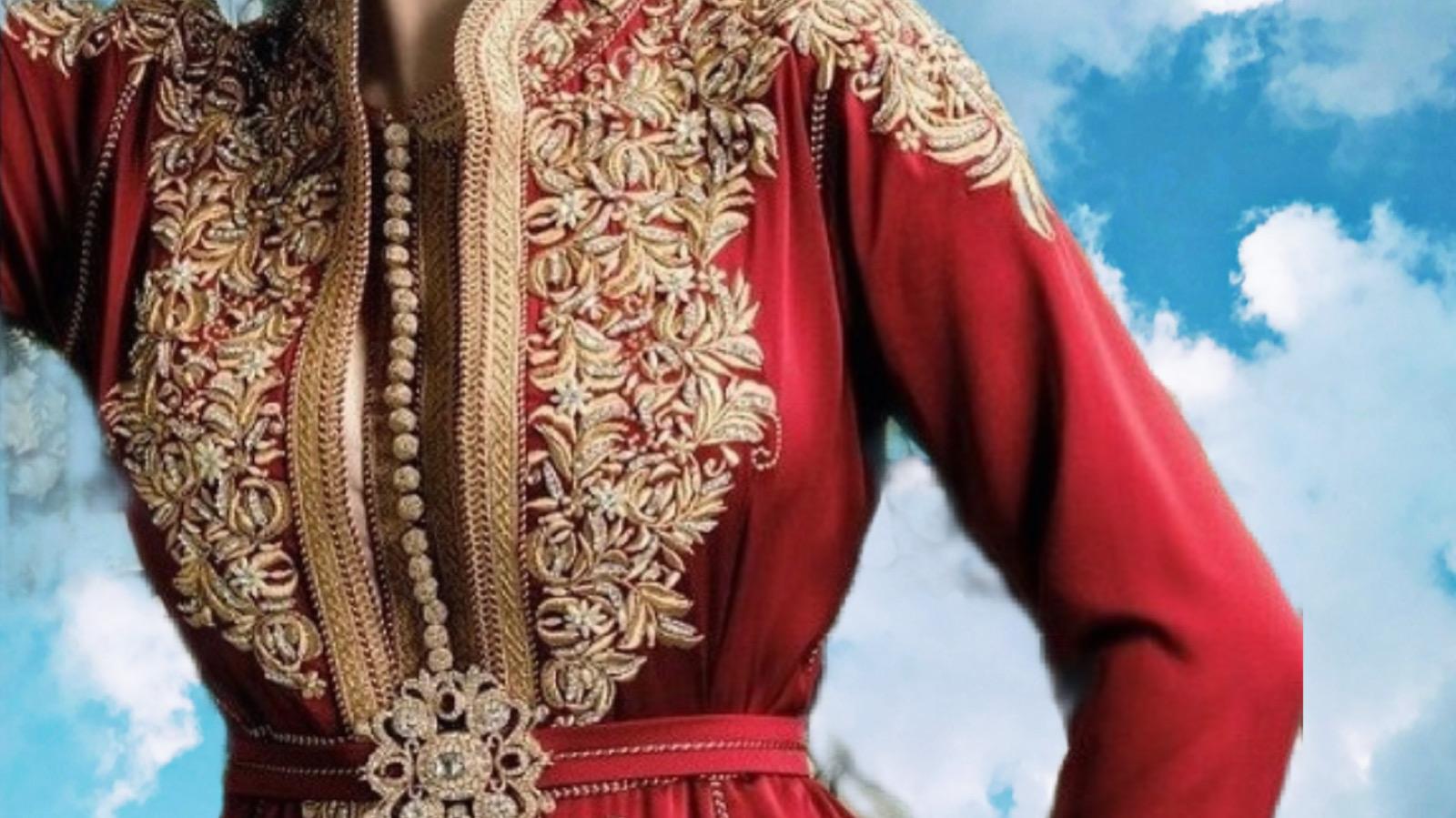
The Moroccan Kaftan is more than just a traditional garment; it is a symbol of elegance, cultural pride, and centuries-old artistry. Worn primarily by women, the Kaftan has evolved over the years from a simple robe to an exquisite piece of high fashion. Adorned with delicate embroidery, intricate beadwork, and luxurious fabrics, it continues to captivate hearts not only in Morocco but around the world. Whether worn at weddings, religious holidays, or grand ceremonies, the Moroccan Kaftan tells stories of heritage and identity, reflecting the vibrant spirit and refinement of Moroccan craftsmanship.
Originating from ancient Persia and later adopted and refined by Moroccan artisans, the Kaftan has a deep historical significance. Its journey through time, influenced by various dynasties and regions, has given rise to numerous styles and forms, each with its unique flair. Today, designers continuously reimagine the Kaftan, blending traditional techniques with contemporary designs, making it a versatile choice for women seeking both heritage and glamour. In this article, we will explore the Kaftan's history, styles, fabrics, cultural importance, craftsmanship, and modern adaptations.
1. Historical Roots of the Moroccan Kaftan
The Moroccan Kaftan traces its origins back to the Umayyad Caliphate, with its roots even deeper in Persian and Ottoman traditions. It was introduced to Morocco through Andalusian influences and became popular among the elite during the Marinid and Saadian dynasties. Worn by royalty and nobles, the Kaftan was a mark of prestige and wealth, often embellished with gold thread and rare silks.
Over the centuries, Moroccan artisans localized the design, adding distinct embroidery patterns, tailored cuts, and regional motifs. These adaptations transformed the Kaftan into a uniquely Moroccan garment. Today, it is recognized as a cultural symbol deeply embedded in the country's identity, representing centuries of evolution, heritage, and skilled craftsmanship.
Varieties and Regional Styles
The Moroccan Kaftan comes in many styles, each reflecting the culture and traditions of specific regions. In cities like Fes and Rabat, the Kaftan is more formal and elaborate, often featuring rich fabrics and traditional embroidery. Meanwhile, regions such as the Rif and the Atlas Mountains offer simpler, more rustic interpretations with handwoven materials and modest designs.
In addition to regional styles, the Kaftan varies according to the occasion. For instance, the "Takchita" is a two-piece Kaftan often worn at weddings, while simpler versions may be worn for family gatherings or religious events. These variations ensure that the Kaftan remains relevant and adaptable across different social and cultural settings.
Fabrics and Materials
One of the most striking features of the Moroccan Kaftan is the choice of luxurious fabrics. Velvet, silk, brocade, satin, and chiffon are commonly used to create elegant drapes and flowing silhouettes. The richness of the fabric contributes significantly to the Kaftan's regal appearance and enhances the overall design.
Embellishments like gold and silver thread, sequins, beads, and semi-precious stones are meticulously hand-stitched into the fabric. These details not only add a touch of glamour but also showcase the artisan's skill and patience. The combination of fine materials and intricate handiwork is what sets the Moroccan Kaftan apart from other traditional garments.
The Role of the Kaftan in Moroccan Culture
The Kaftan plays a vital role in Moroccan social and cultural life. It is commonly worn at weddings, Eid celebrations, and important family gatherings. For Moroccan women, owning a beautiful Kaftan is a matter of pride, often passed down through generations as a treasured heirloom.
In bridal ceremonies, the Kaftan is particularly significant. A bride may change into several Kaftans throughout the evening, each one representing a different region of Morocco. This tradition not only honors cultural diversity but also showcases the richness of Moroccan heritage in a single event.
Artisanship and Embroidery Techniques
The making of a Moroccan Kaftan involves a collaboration between designers, tailors, and traditional artisans. The "maalem" or master craftsman is often responsible for the embroidery, known as "sfifa" and "aqad." These techniques require years of training and are passed down from one generation to the next.
Each Kaftan is a labor of love, with some taking weeks or even months to complete. The embroidery patterns, color choices, and finishing touches are carefully planned to ensure harmony and elegance. This high level of craftsmanship is what transforms the Kaftan into a piece of wearable art, reflecting both tradition and innovation.
Modern Influence and Global Reach
In recent years, the Moroccan Kaftan has gained international recognition, gracing fashion runways in Paris, Dubai, and New York. Designers have modernized the Kaftan by incorporating contemporary cuts, lighter fabrics, and minimalist designs while preserving its traditional essence. This fusion has made the Kaftan appealing to younger generations and fashion enthusiasts worldwide.
Many international celebrities have also embraced the Moroccan Kaftan, further boosting its global popularity. Whether worn at cultural festivals, fashion shows, or private events, the Kaftan continues to captivate audiences with its timeless beauty and cultural richness. Its journey from ancient palaces to modern fashion shows proves that the Moroccan Kaftan is not just a garment but a living legacy.